A Foodie’s Tour from Kobe to Kagawa
From olive-fed beef to soy sauce ice cream — something delicious off the beaten track
From unusual local delicacies to luxury beef, draw your chopsticks! Here’s what to look forward to on your next culinary adventure in Kobe and Kagawa.
“I’m so sick of my own cooking!” sighed a girlfriend of mine in the middle of last year.
Her outburst took me by surprise as she’s quite the chef. I get it, though — sometimes you just want to be served something on a fancy plate, be delighted and surprised and then relax to savor the whole experience. This especially true now, when most of us have been cooking at home perhaps a bit more often than we’d ideally like to.
There have been fewer opportunities for gourmand adventures of late, so I have been stockpiling many of these meals in my mind. Some people have a bucket list, I have a plate list and when it comes to regional specialties, the city of Kobe and the tiny Kagawa Prefecture should definitely be on your plate list. So from unusual local delicacies to luxury beef, draw your chopsticks! Here’s what to try and where to go when you next visit those two mouth-watering gastronomic treasure troves.
The journey begins: Kobe
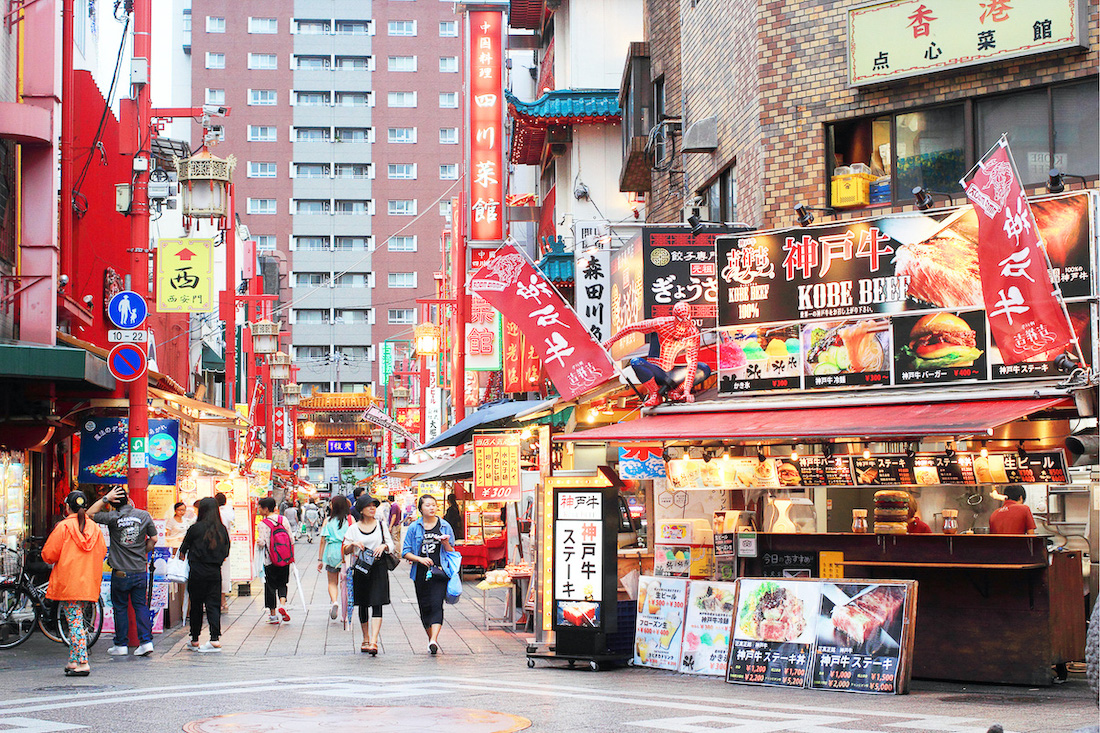
A street market in Kobe’s Chinatown.
As one of the first ports in Japan to open to external trade at the start of the Meiji period in 1868, the city of Kobe developed as a fascinating mix of international influences, with streets that include colonial-style European residences as well as a lively Chinatown.
While this culturally eclectic city has many culinary delights to offer, there is one dish in particular that springs to mind: Kobe beef.
Kobe beef
Renowned worldwide (and for a good reason), Kobe beef comes from Tajima cows that must be born, raised and slaughtered in Hyogo Prefecture at approved farms. In fact, Kobe beef has the strictest eligibility criteria in the world and each piece is carefully graded. I find the balance between the akami (red meat) and shimofuri (fat marbling) to be perfect, producing exquisitely tender meat and that melt-in-the-mouth experience.
For a teppanyaki experience in which a chef will cook your Wagyu (Japanese cattle) beef on a grill before you, try Restaurant Kawamura, which lets you make reservations online up to three days in advance.
Onwards to Shodoshima
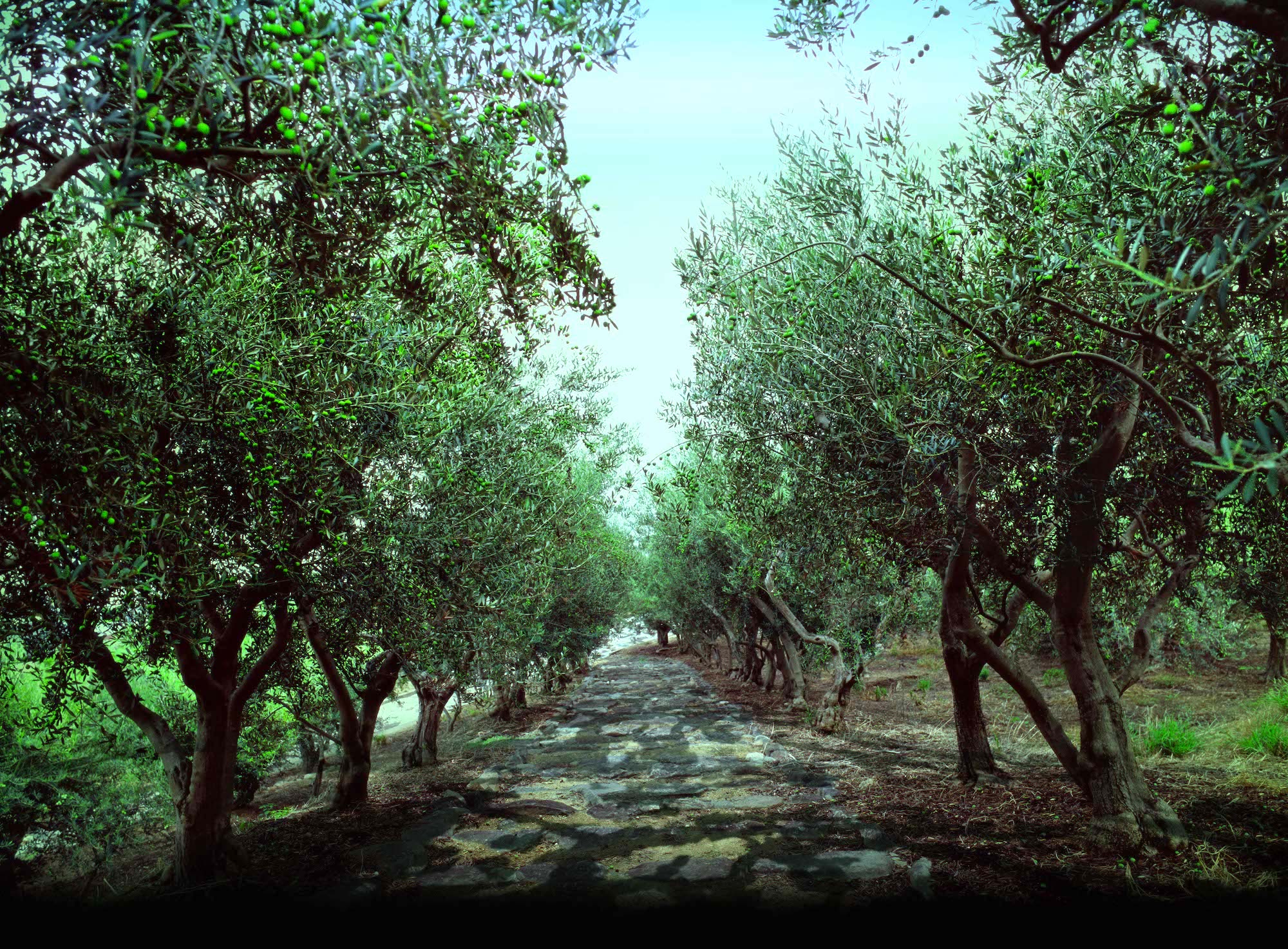
Olive trees in Kagawa Prefecture.
Next, hop on the Jumbo Ferry to Shodoshima in Kagawa Prefecture. Shodoshima is said to be one of the first islands born to the gods in the creation myth of Japan. I like to think it’s why there are so many delicious things packed into its just over 150-square-kilometer area.
Kagawa olives
Perhaps the most famed of Shodoshima’s products because of their scarcity in Japan are its olives. Due to the island’s warm climate, olives have been successfully cultivated there for over a century. You can even visit the first site where they were grown — the Shodoshima Olive Park, complete with a Greek windmill, which is the ultimate photo spot for fans of the Studio Ghibli movie Kiki’s Delivery Service. Olive oil and pickled olives are sold at many shops, alongside various olive oil beauty products.
Olive-fed Wagyu beef
We can’t let Kobe claim all the beef glory or perhaps we just want another excuse to be gluttonous. Either way, the unique, authentic Olive Beef brand must be savored. The cows are fed a special diet supplemented with olive feed, which is made out of a leftover residue from pressing olives to make olive oil. This contributes to a clever system of circular agriculture, in which the manure from cows are used as fertilizer to grow the olive trees.
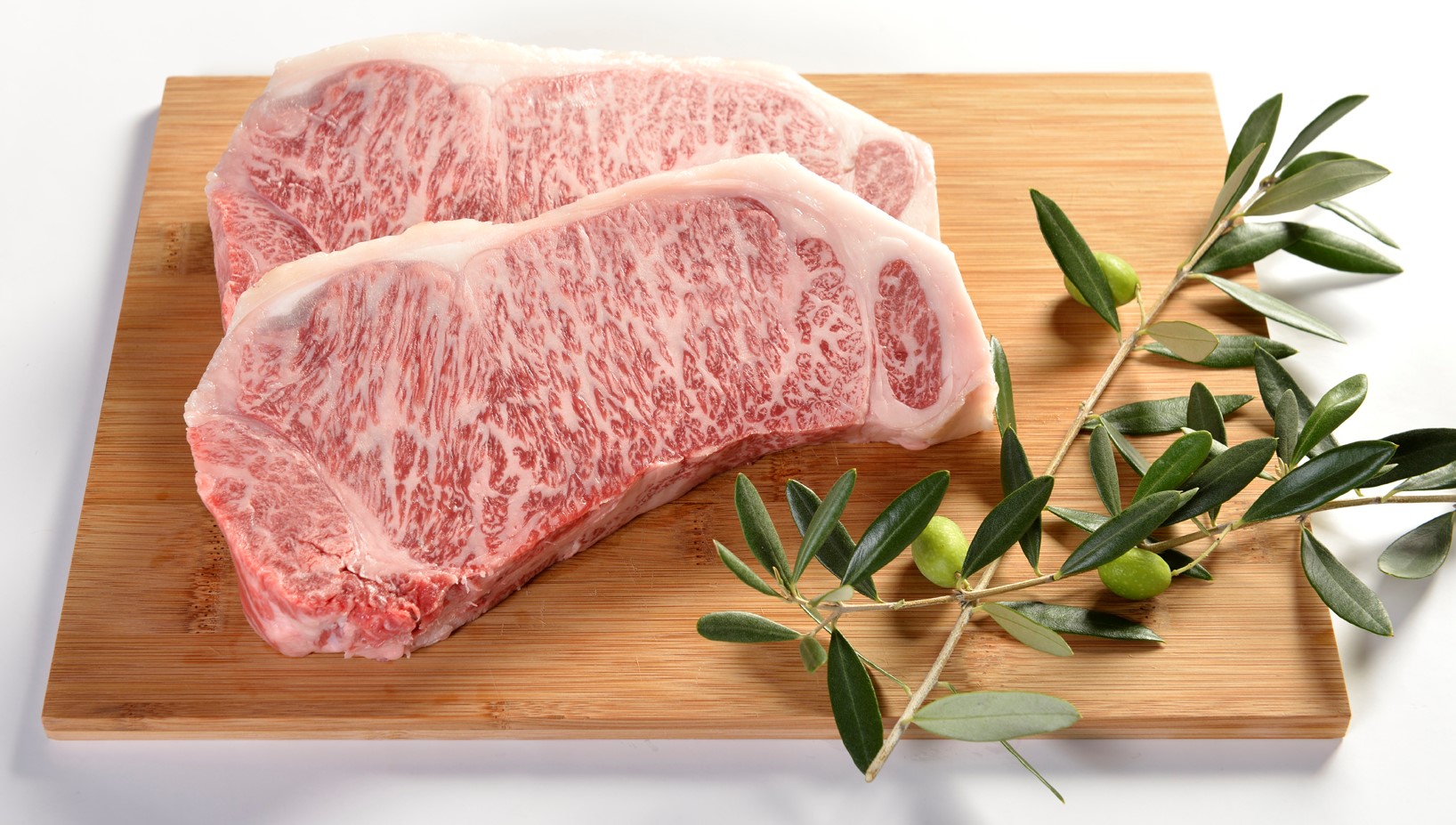
Olive-fed Wagyu beef.
There are over 50 Olive Beef designated restaurants in Kagawa Prefecture where you can taste the best quality of this mouth-watering meat. Among those, stop by the Ohkido Hotel in Shodoshima, which offers a variety of 0live-fed beef dishes for lunch and dinner, or the Komame Shokudo where you can taste Olive Beef burgers. Steakhouse Ichigo in Takamatsu is also a must-visit spot for the more curious foodies — here, you can compare different parts of Olive Beef in one dish for a more affordable price.
Yamaroku soy sauce
Surprisingly for such a tiny island, there are around 20 soy sauce breweries on Shodoshima. Stop by Yamaroku, run by its fifth-generation owner and housed in a 100-year-old building. The brewery hall contains around 40 two-meter high cedar barrels where the rich soy sauce is fermented for up to three years.
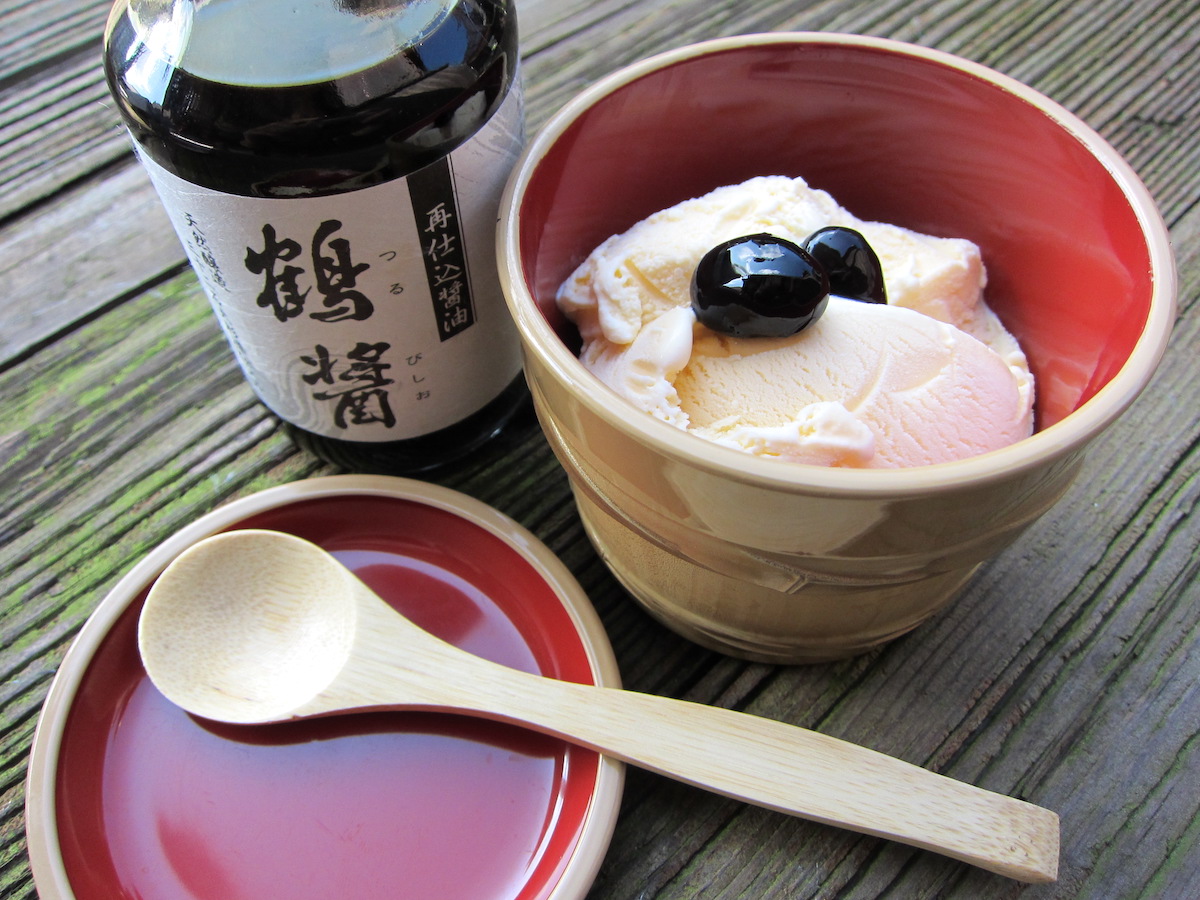
A pleasant surprise: Who would’ve thought that vanilla ice cream topped with soy sauce could be that good?
You can get a glimpse of the traditional process during a brewery tour (no reservation needed) and then round off your visit with vanilla ice cream topped with soy sauce (or a soy sauce pudding), adding irresistible caramel-like umami notes.
Daggertooth-pike conger eel
I’m not someone who judges by looks, but hamo (dagger-tooth pike conger eel) could easily be the baddie in a Disney movie. Unfortunately for this creature, we humans have figured out that behind its fearsome looks is a fantastic taste and texture.
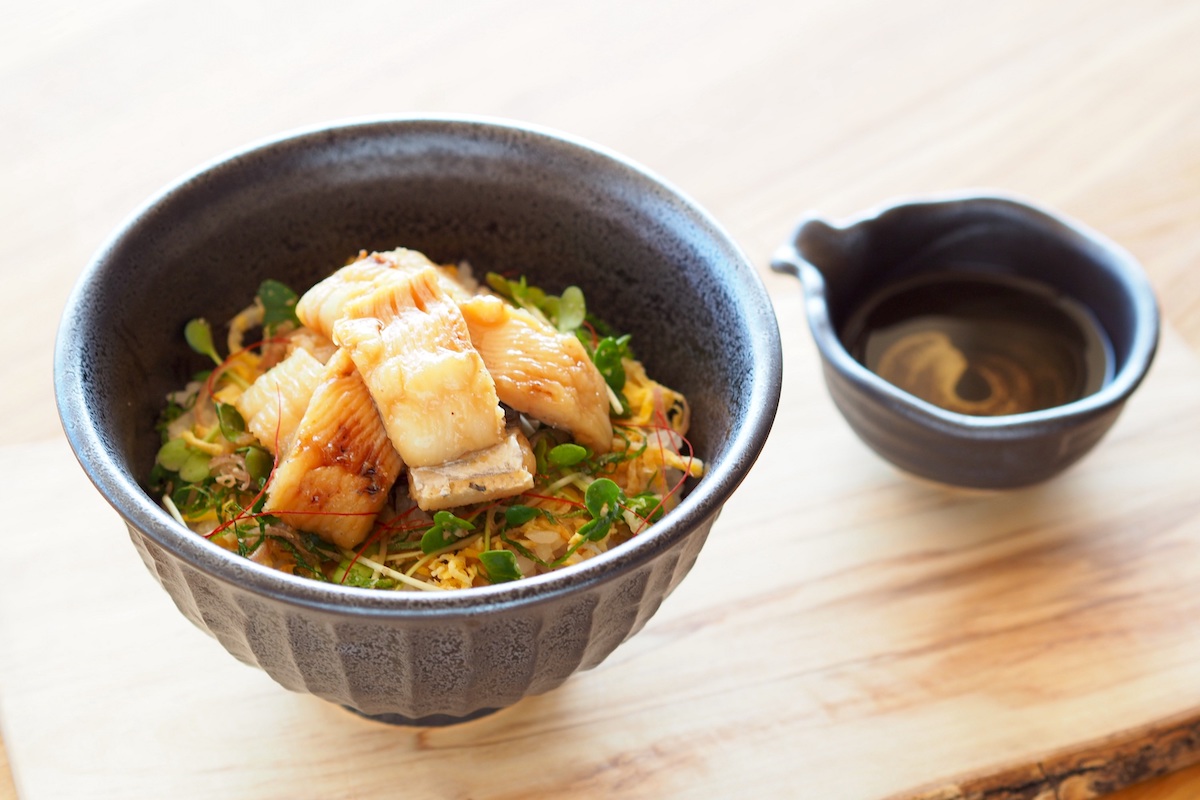
A Kagawa delicacy: Hamo-don is a cooked “Hamo” Daggertooth Pike Conger Eel on steamed rice.
This Shodoshima specialty is popular for its high levels of collagen, which is said to be good for the skin, but also goes well with alcohol, especially when deep-fried. Beauty and beer? There’s no real downside here. One popular restaurant to taste this local dish is Shimakatsu, which serves seafood lunch sets and multi-course dinners in tatami rooms.
Continue eating in Takamatsu
Hop back on the Jumbo Ferry to reach Takamatsu within an hour and a half. Takamatsu, the capital of Kagawa Prefecture, is renowned for the beautiful, 400-year-old Ritsurin Garden. It boasts all you could want from a quintessential Japanese garden including a traditional arched bridge over a tranquil pond reflecting sculpted trees. In short: it’s a great place for a stroll to work up an appetite for the next mission.
Kagawa sanuki udon
Kagawa, previously known as Sanuki, lacked rainfall, making rice cultivation challenging, so people began using wheat, too. This gave rise to the popularity of udon, the wheat flour noodles most of us have grown fond of during our stay in Japan. White, fat and slightly springy, these noodles are silky to slurp and a local staple. In Kagawa, this local favorite can be eaten for breakfast as early as 6 a.m. at some stores. They are commonly served either in a hot broth often made from dried sardines or cold, beautifully coiled with a dipping sauce and sometimes an egg and spring onions. Simple bowls can be found for as little as ¥200 (the perfect excuse for eating at least two bowls a day).
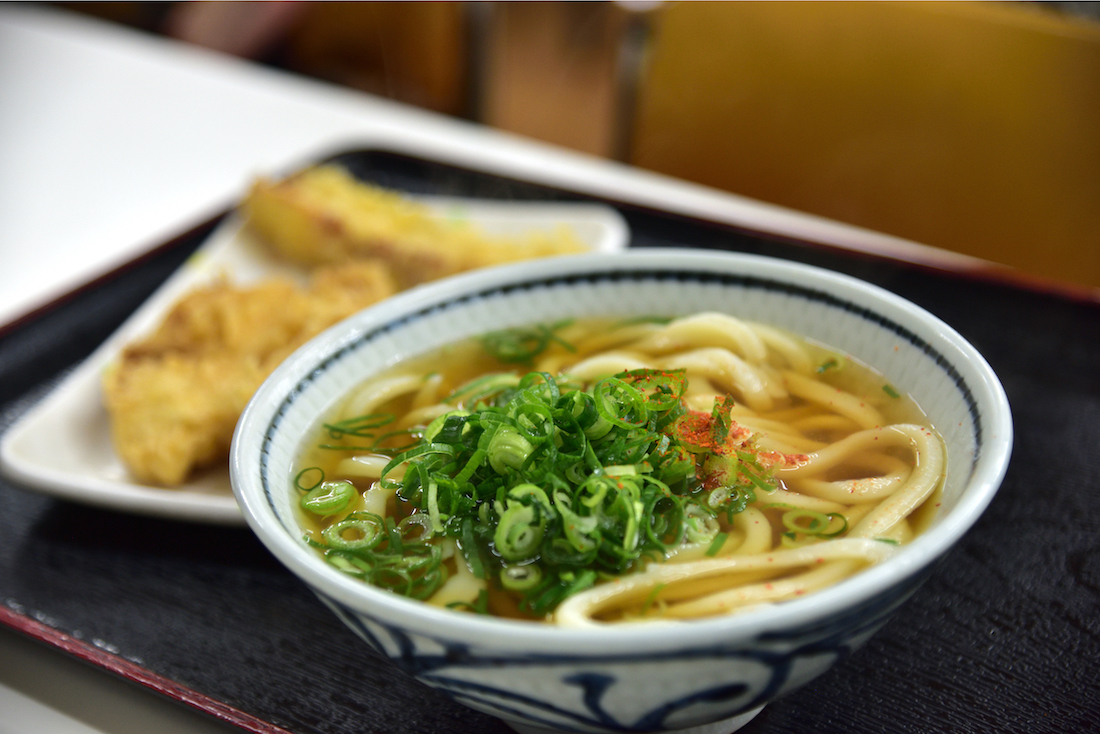
A local staple: Sanuki udon is Kagawa’s soul food.
To get some hands-on experience, head to Sanuki Mengyo where you can try rolling out and cutting up some noodles yourself. The whole experience takes about 90 minutes. You can choose between enjoying your noodles hot or cold afterwards and perhaps even add a tempura platter on the side (because why not?).
When it’s safe to travel again and you’re fed up with your own cooking, head down to Kobe and Kagawa. You’ll be pleasantly surprised and fully satisfied.
The Deets
Access to Kobe from Tokyo is about three hours by bullet train. From Kansai International Airport it’s about 30 minutes by Bay Shuttle high-speed boat or under two hours by train.
Access to Shodoshima /Takamatsu: The Jumbo Ferry departs four times a day from Kobe to Takamatsu and stops at Shodoshima twice a day.
- Kobe to Shodoshima: Roughly three hours
- Shodoshima to Takamatsu
- Kobe to Takamatsu: Around 4 hours
For timetables and fares, please see the website.
Restaurants and attractions
- Restaurant Kawamura, 1524 Arise, Ikawadani-town, Nishi-ward, Kobe, Hyogo Prefecture (and other locations). Map
- Shodoshima Olive Park, 1941-1 Nishimura-kou, Shodoshima-cho, Shozu-gun, Kagawa Prefecture. Map
- Ohkido Hotel, 5165-216 Ko, Tonosho-cho, Shozu-gun, Kagawa Prefecture. Map
- Komame Shokudo, 1512-2 Nakayama, Shodoshima, Shozu-gun, Kagawa Prefecture. Map
- Steakhouse Ichigo, 2306 Ota, Shimo-machi, Takamatsu, Kagawa Prefecture. Map
- Yamaroku, 1607 Yasuda, Shodoshima, Shozu-gun, Kagawa Prefecture. Map
- Ritsurin Garden, 1-20-16 Ritsurincho, Takamatsu, Kagawa Prefecture. Map
- Shimakatsu, 267 Ko, Tonosho, Shozu-gun, Kagawa Prefecture. Map
- Sanuki Mengyo, 235-1 Nishihazemachi, Takamatsu, Kagawa Prefecture, Map. Other locations available in Kagawa, Kobe and Tokyo. For details on booking an udon-making experience, see here.
For safe travel tips and national and regional measures in Japan to tackle the Covid-19 pandemic spread, please refer to the JNTO Coronavirus (COVID-19) advisory information page.







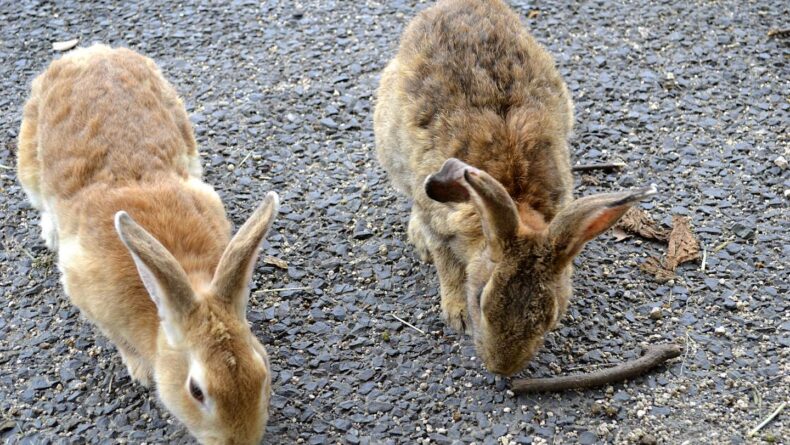
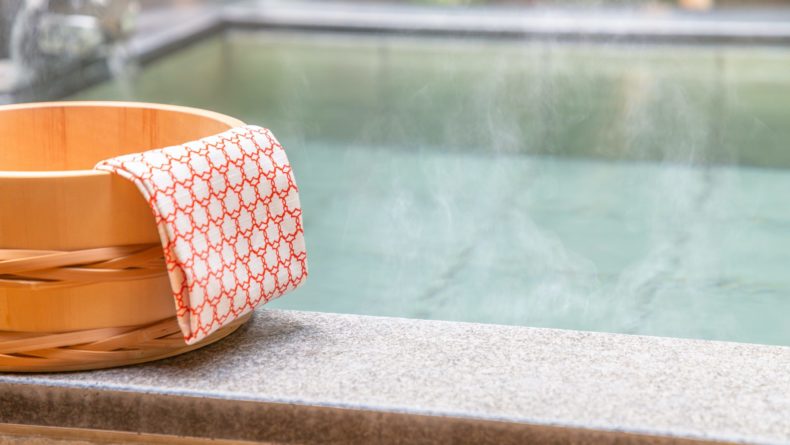
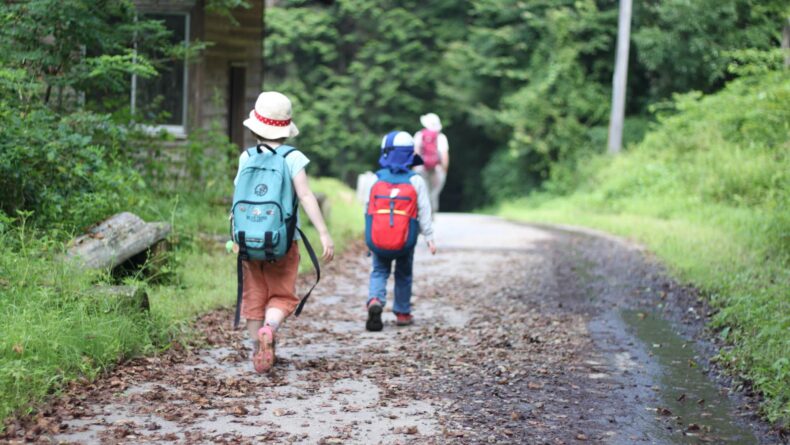
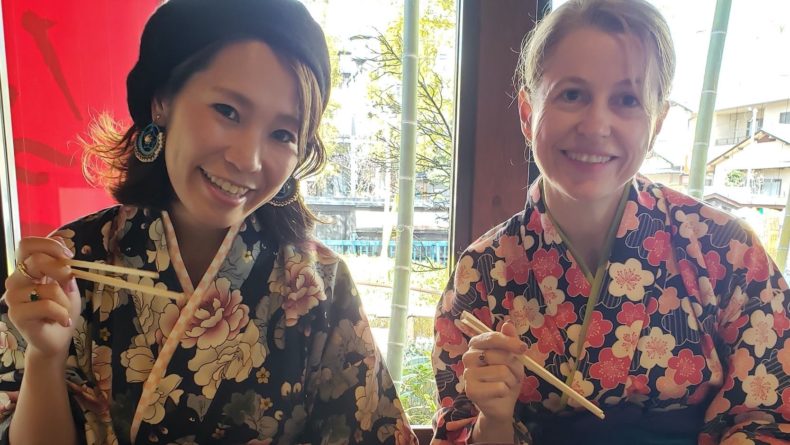
Leave a Reply